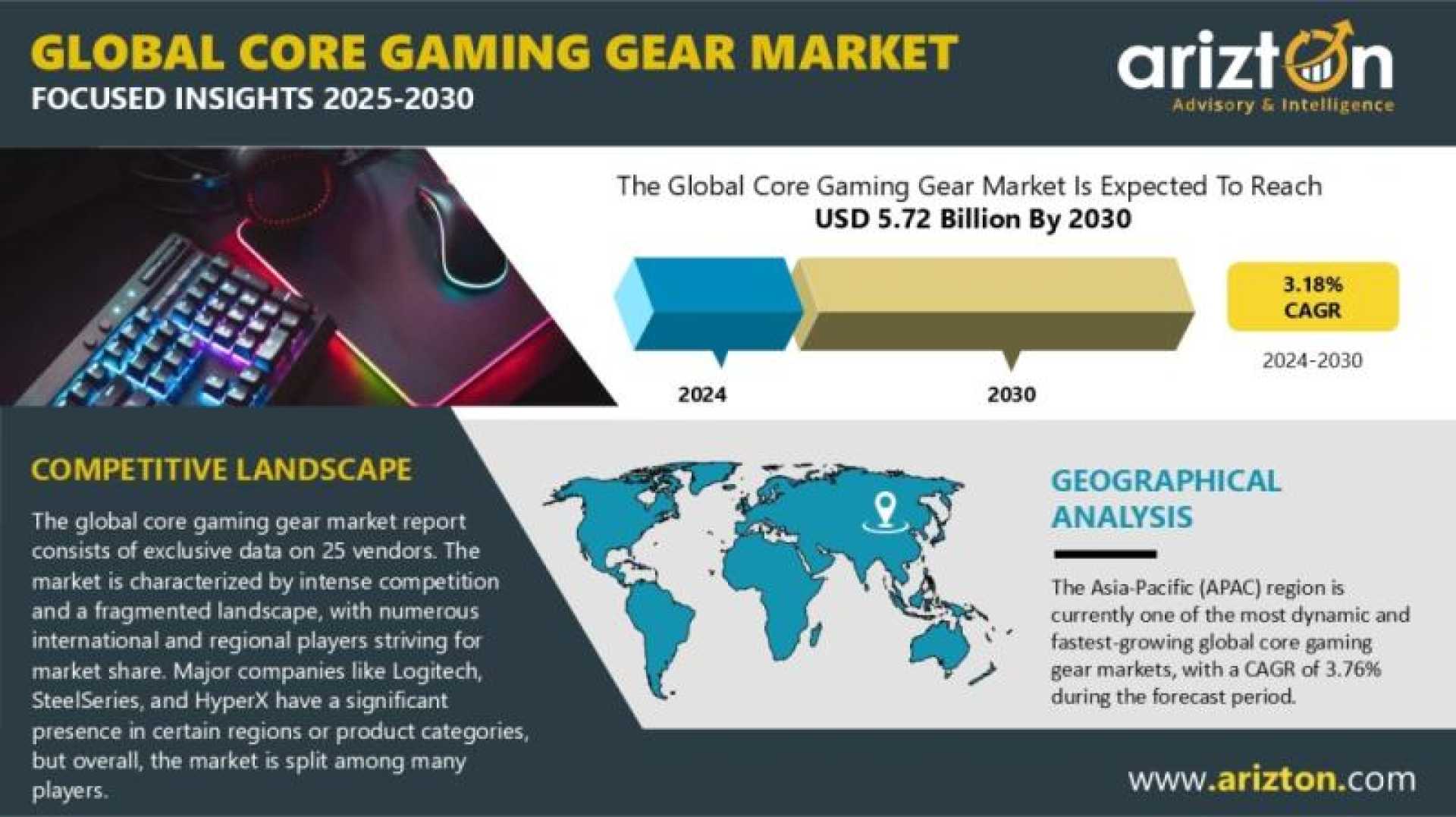Business
Core Gaming Gear Market Expected to Reach $5.72 Billion by 2030

DUBLIN, Ireland (GLOBE NEWSWIRE) — The Core Gaming Gear Market, valued at USD 4.74 billion in 2024, is projected to grow to USD 5.72 billion by 2030, with a compound annual growth rate (CAGR) of 3.18%. The surge in demand is largely driven by advancements in gaming technology and consumer preferences for immersive experiences.
A significant challenge in this market is the prevalence of counterfeit and low-quality products, especially in online platforms. Gamers today prioritize immersive audio, responsive controls, and ergonomic designs, prompting companies to invest in high-quality peripherals, such as mechanical keyboards and high-fidelity headsets.
Razer’s innovative AI-powered headset exemplifies the industry’s shift towards smarter gaming equipment, featuring tools for in-game assistance and voice translation capabilities. The Asia-Pacific (APAC) region is a leader in this growth, boasting a CAGR of 3.76% during the forecast period due to its thriving esports scene and digitally savvy youth.
Countries like China, India, and South Korea are influencing market behavior, with their unique preferences creating diverse growth opportunities across various product segments. The explosion of esports events and streaming platforms has significantly increased demand for gaming peripherals in the region.
Customization and RGB lighting have emerged as popular trends, allowing gamers to express their individuality and enhance their setups. This personalization has become almost a status symbol among enthusiasts, further stimulating sales.
Moreover, ergonomic designs are increasingly prioritized as gaming becomes a long-term lifestyle for many. Gaming hardware that addresses health concerns can help prevent injuries associated with prolonged use. This focus on wellness is becoming a critical selling point for manufacturers.
As esports competitions gain traction worldwide, they inspire young gamers to purchase professional-grade equipment. Major events like the League of Legends World Championship attract millions of viewers, and many players aspire to mirror the setups of their favorite streamers.
However, the high cost of premium gear remains a barrier for casual gamers, limiting the market’s reach. Brands like Razer and Logitech position their offerings as luxury items, making them less accessible to price-sensitive consumers.
In summary, while there are hurdles to overcome, the core gaming gear market is poised for substantial growth, driven by technological advancements, changing consumer demands, and the ongoing expansion of the esports industry.












